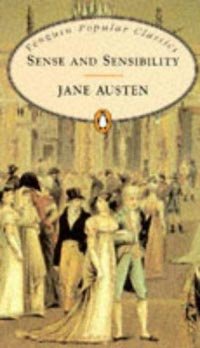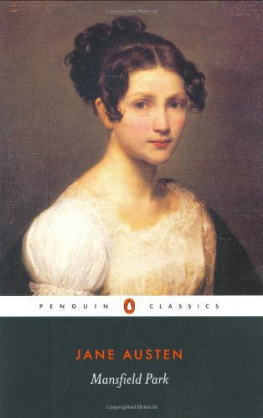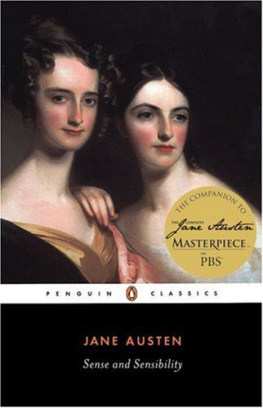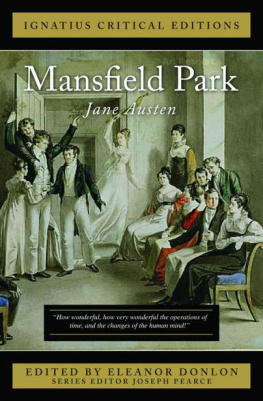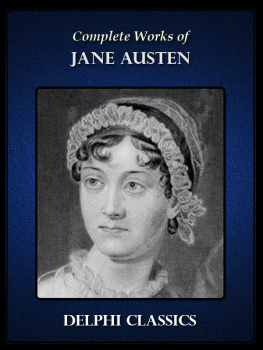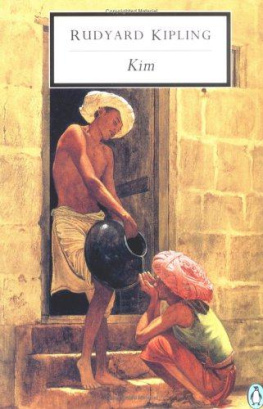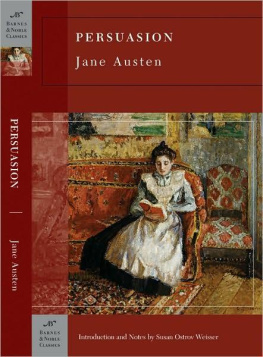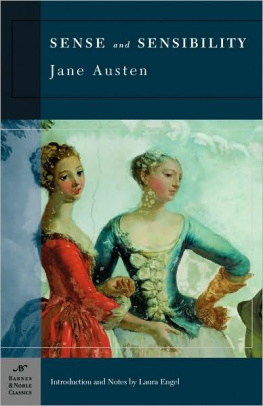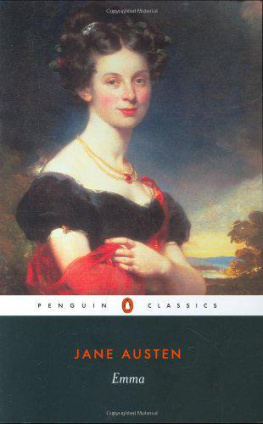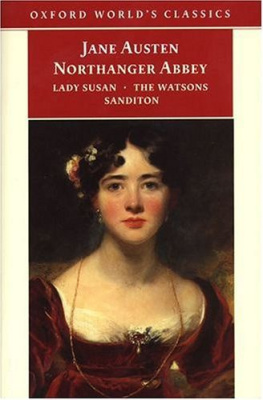
Table of Contents
From the Pages of
Pride and Prejudice
It is a truth universally acknowledged, that a single man in possession of a good fortune must be in want of a wife. (page 5)
You mistake me, my dear. I have a high respect for your nerves. They are my old friends. I have heard you mention them with consideration these twenty years at least. (page 7)
Pride relates more to our opinion of ourselves; vanity to what we would have others think of us. (page 21)
Happiness in marriage is entirely a matter of chance. (page 24)
I wonder who first discovered the efficacy of poetry in driving away love! (page 45)
To find a man agreeable whom one is determined to hate! Do not wish me such an evil. (page 91)
Those who do not complain are never pitied. (page 113)
Without thinking highly either of men or of matrimony, marriage had always been her object: it was the only honourable provision for well-educated young women of small fortune, and, however uncertain of giving happiness, must be their pleasantest preservative from want. (page 122)
Stupid men are the only ones worth knowing, after all. (page 154)
They parted at last with mutual civility, and possibly a mutual desire of never meeting again. (page 229)
She found, what has been sometimes found before, that an event to which she had looked forward with impatient desire, did not, in taking place, bring all the satisfaction she had promised herself. It was consequently necessary to name some other period for the commencement of actual felicity; to have some other point on which her wishes and hopes might be fixed, and by again enjoying the pleasure of anticipation, console herself for the present, and prepare for another disappointment. (page 232)
How strange this is! And for this we are to be thankful. That they should marry, small as is their chance of happiness, and wretched as is his character, we are forced to rejoice! (page 294)
She was convinced that she could have been happy with him, when it was no longer likely they should meet. (page 301)
You must learn some of my philosophy. Think only of the past as its remembrance gives you pleasure. (page 356)
I am the happiest creature in the world. Perhaps other people have said so before, but no one with such justice. I am happier even than Jane; she only smiles, I laugh. (page 369)


Published by Barnes & Noble Books
122 Fifth Avenue
New York, NY 10011
www.barnesandnoble.com/classics
Pride and Prejudice was first published in 1813.
Originally published in mass market paperback format in 2003 by Barnes &
Noble Classics with new Introduction, Notes, Biography, Chronology,
Inspired By, Comments & Questions, and For Further Reading.
Trade paperback edition published in 2004.
Introduction, Notes, and For Further Reading
Copyright 2003 by Carol Howard.
Note on Jane Austen, The World of Jane Austen and Pride and Prejudice ,
Inspired by Pride and Prejudice , and Comments & Questions
Copyright 2003 by Barnes & Noble, Inc.
All rights reserved. No part of this publication may be reproduced or transmitted in any form or by any means, electronic or mechanical, including photocopy, recording, or any information storage and retrieval system, without the prior written permission of the publisher.
Barnes & Noble Classics and the Barnes & Noble Classics
colophon are trademarks of Barnes & Noble, Inc.
Pride and Prejudice
ISBN-13: 978-1-59308-201-7 ISBN-10: 1-59308-201-0
eISBN : 978-1-411-43296-3
LC Control Number 2004100759
Produced and published in conjunction with:
Fine Creative Media, Inc.
322 Eighth Avenue
New York, NY 10001
Michael J. Fine, President and Publisher
Printed in the United States of America
Jane Austen

The English novelist Jane Austen was born December 16, 1775, the seventh of eight children, in the Parsonage House of Steventon, Hampshire, where she spent her first twenty-five years. During her brief lifetime Austen witnessed political unrest, revolution, war, and industrialization, yet these momentous events are not the central subjects of her finely focused novels. Rather, Austen wrote of her immediate experience: the microcosm of the country gentry and its class-conscious insularity. Janes father, the Reverend George Austen, was the erudite country rector of Steventon, and her mother, Cassandra (ne Leigh), was descended from an aristocratic line of learned clergymen. By no means wealthy, the Austens nonetheless enjoyed a comfortable, socially respectable life, and greatly prized their childrens education.
Jane and her beloved elder (and only) sister, Cassandra, were schooled in Southampton and Reading for a short period, but most of their education took place at home. Private theatrical performances in the barn at Steventon complemented Janes studies of French, Italian, history, music, and eighteenth-century fiction. An avid reader from earliest childhood, Jane began writing at age twelve, no doubt encouraged by her cultured and affectionate family. Indeed, family and writing were her great loves; despite a fleeting engagement in 1802, Austen never married. Her first two novels, Elinor and Marianne and First Impressions, were written while at Steventon but never published in their original form.
Following her fathers retirement, Jane moved in 1801 with her parents and sister to Bath. That popular watering hole, removed from the country life Jane preferred, presented the sociable young novelist with a wealth of observations and experience that would later emerge in her novels. Austen moved to Southampton with her mother and sister after the death of her father in 1805. Several years later the three women settled in Chawton Cottage in Hampshire, where Austen resided until the end of her life. She relished her return to the countryside and, with it, a renewed artistic vigor that led to the revision of her early novels. Sense and Sensibility , a reworking of Elinor and Marianne, was published in 1811, followed by Pride and Prejudice , a reworking of First Impressions, two years later.
Austen completed four more novels ( Mansfield Park , Emma , Northanger Abbey , and Persuasion ) in the Chawton sitting room. Productive and discreet, she insisted that her work be kept secret from anyone outside the family. All of her novels were published anonymously, including the posthumous release, thanks to her brother Henry, of Northanger Abbey and Persuasion .
The last years of Austens life were relatively quiet and comfortable. Her final, unfinished work, Sanditon , was put aside in the spring of 1817, when her health sharply declined and she was taken to Winchester for medical treatment of what appears to have been Addisons disease or a form of lymphoma. Jane Austen died there on July 18, 1817, and is buried in Winchester Cathedral.
The World of Jane Austen and Pride and Prejudice

|
| 1775 | The American Revolution begins in April. Jane Austen is born on December 16 in the Parsonage House in Steventon, Hampshire, England, the seventh of eight children (two girls and six boys). |
Next page

